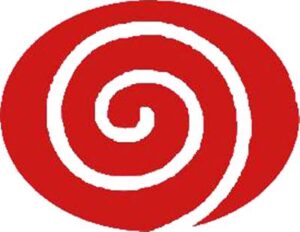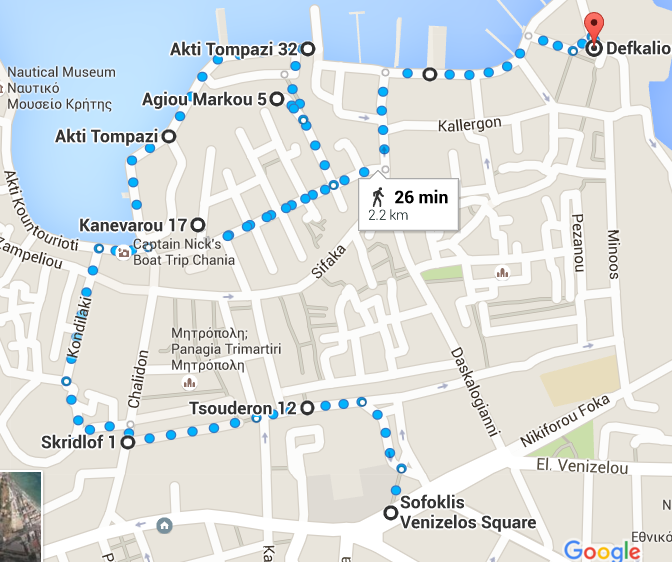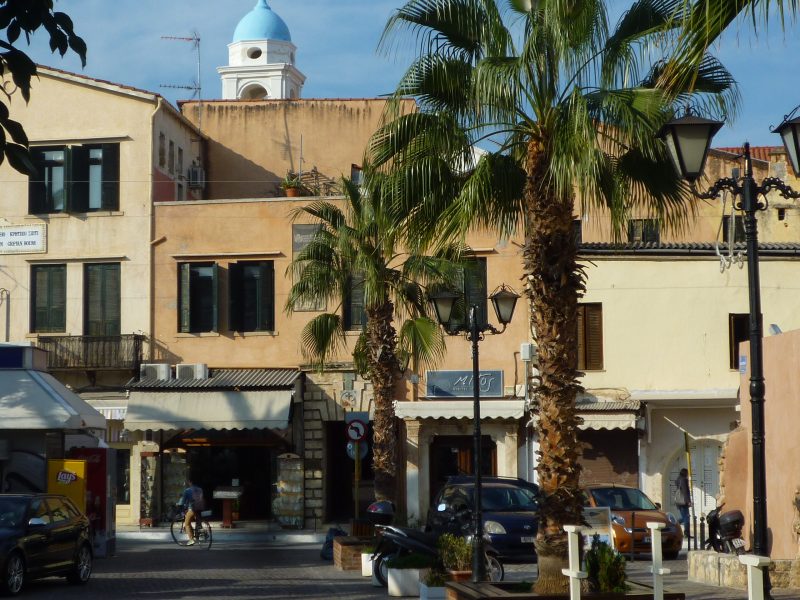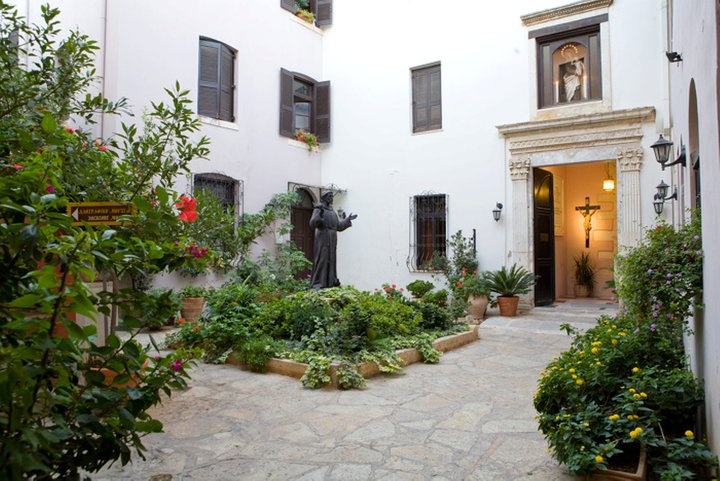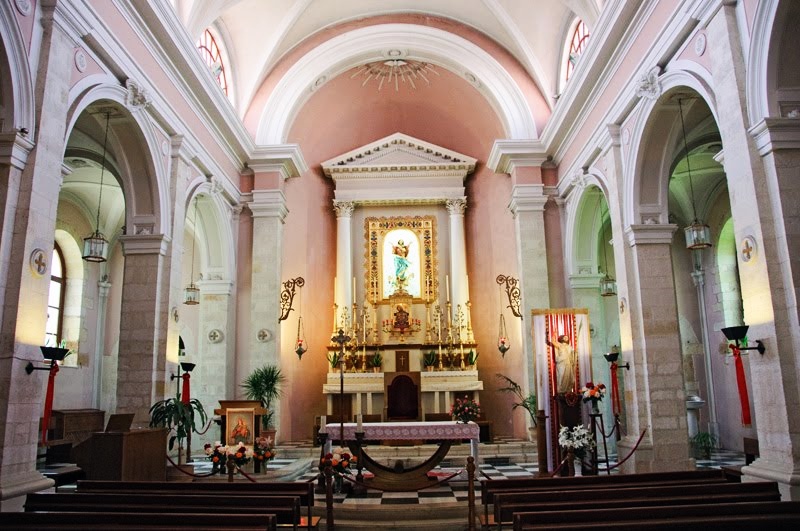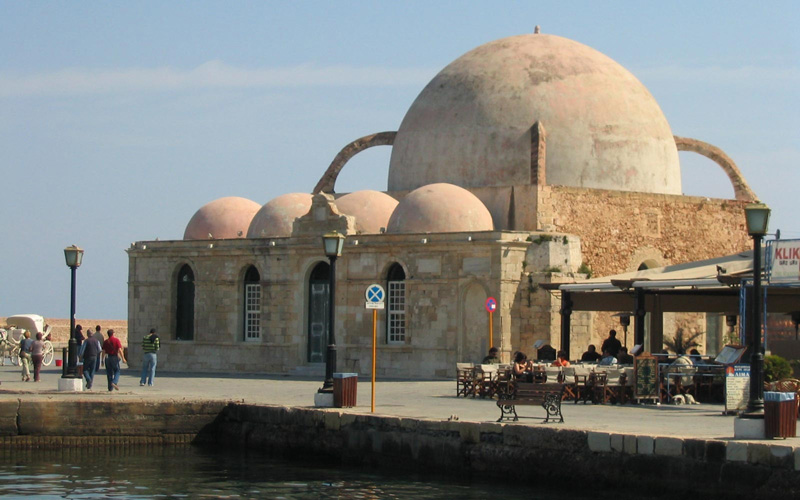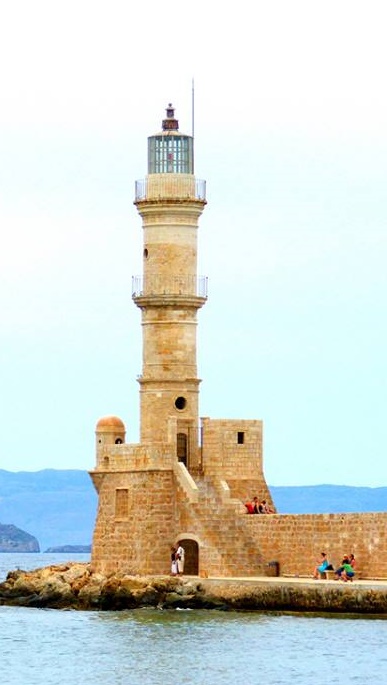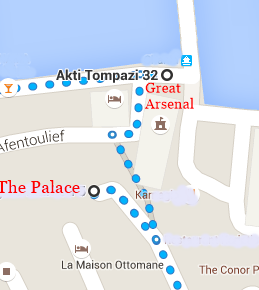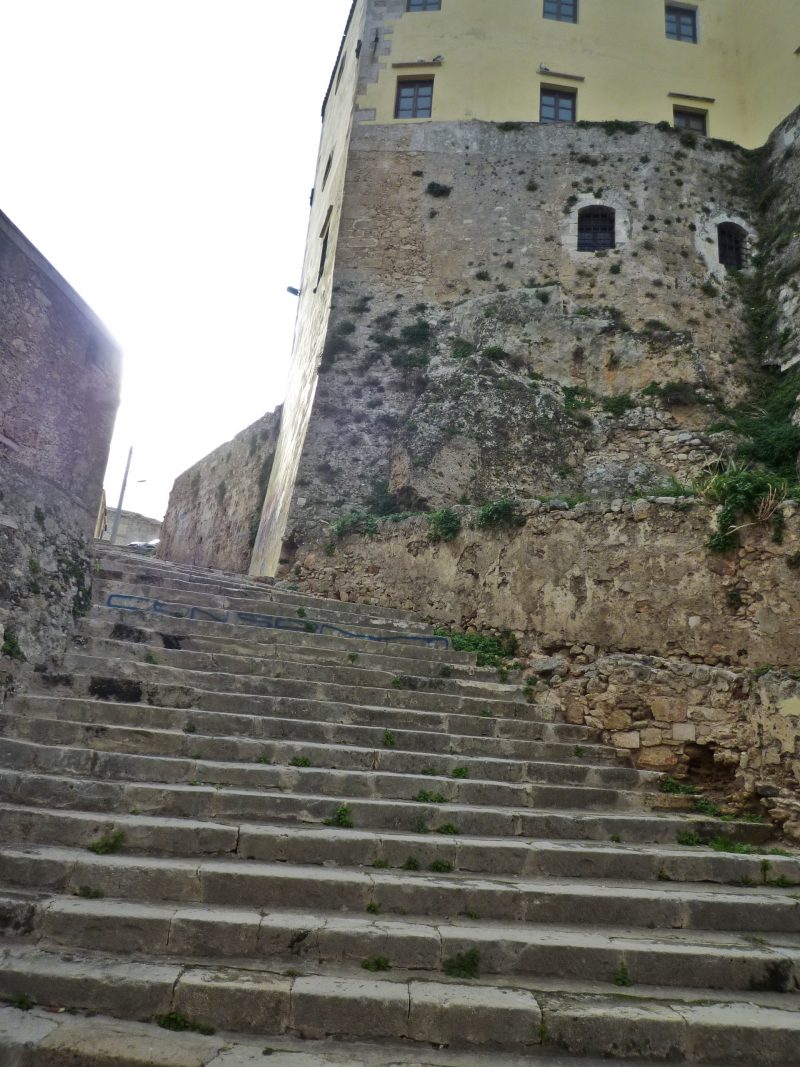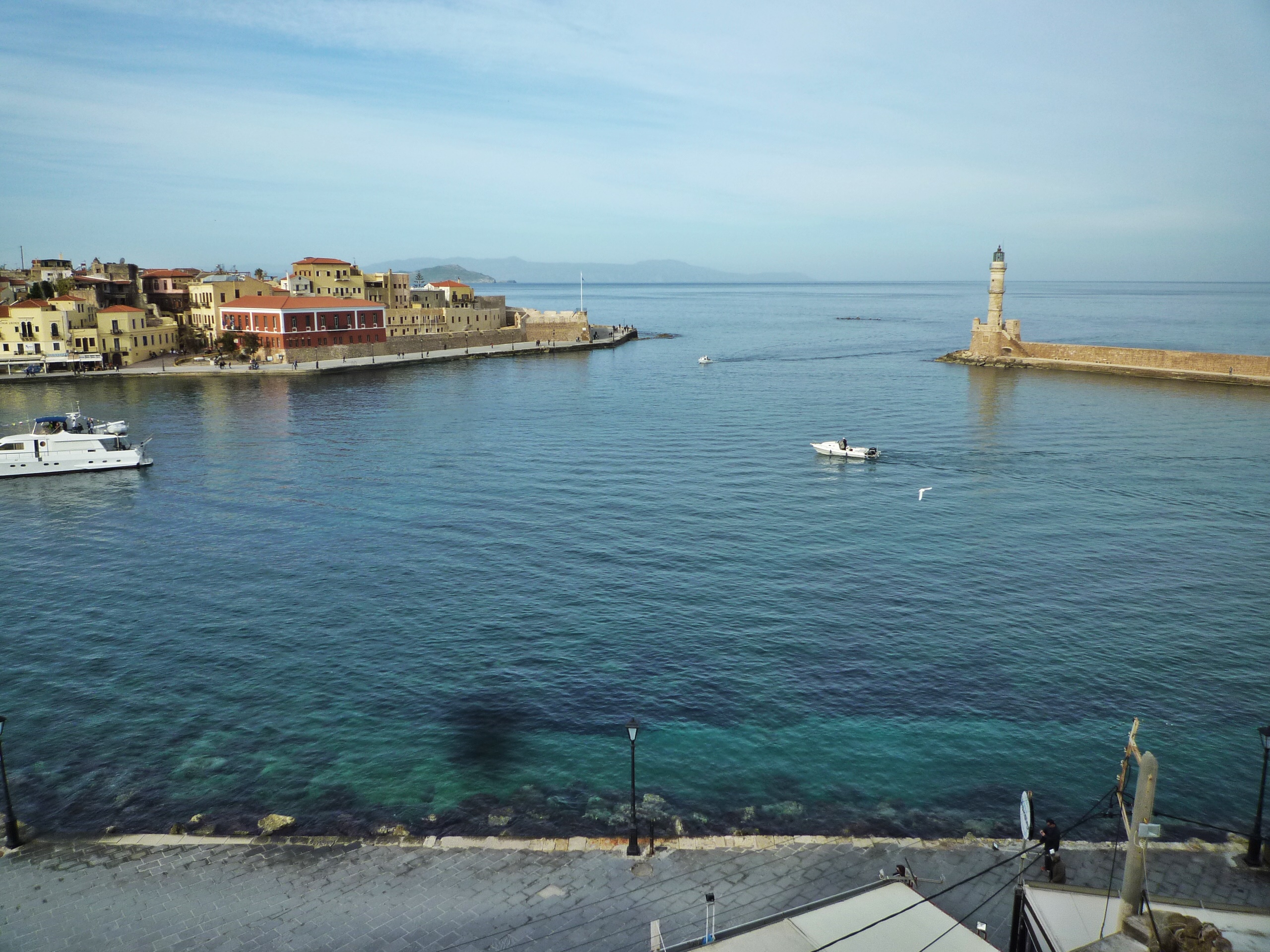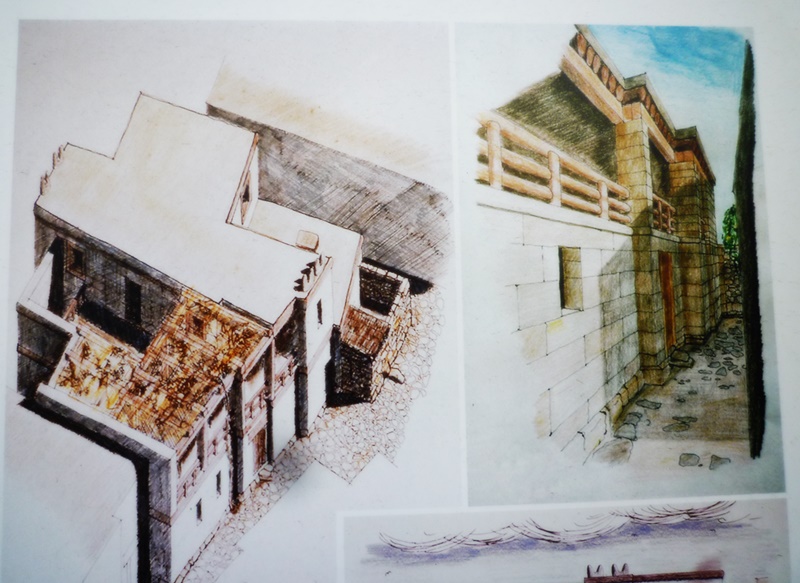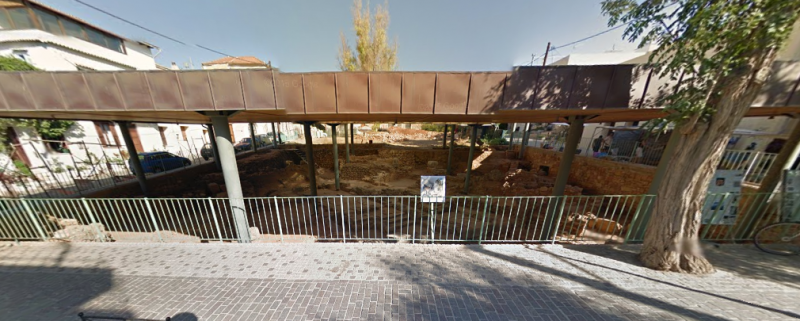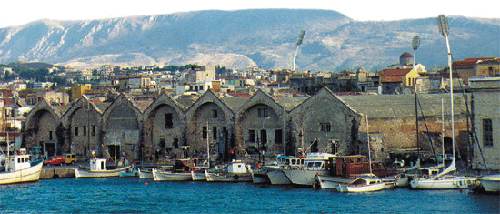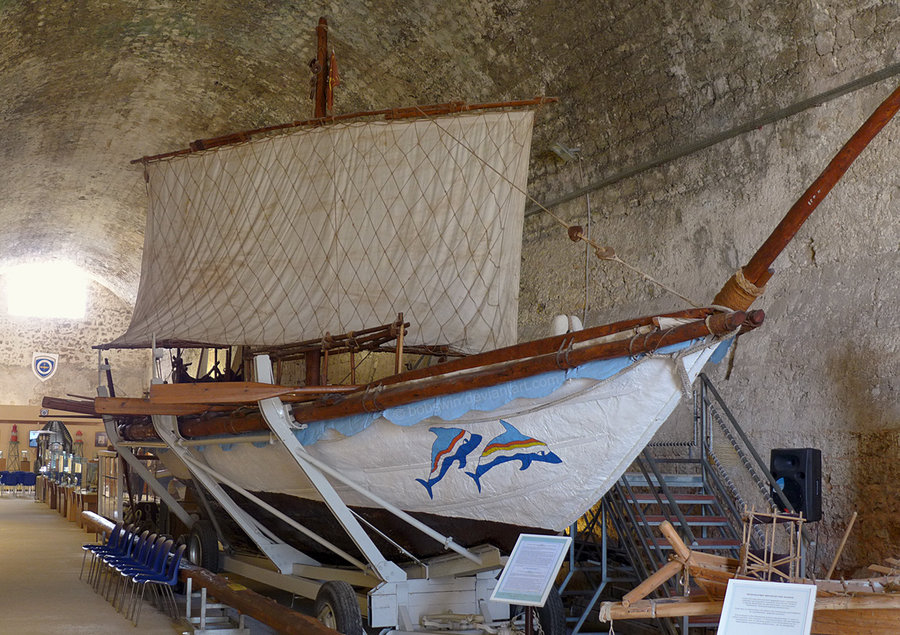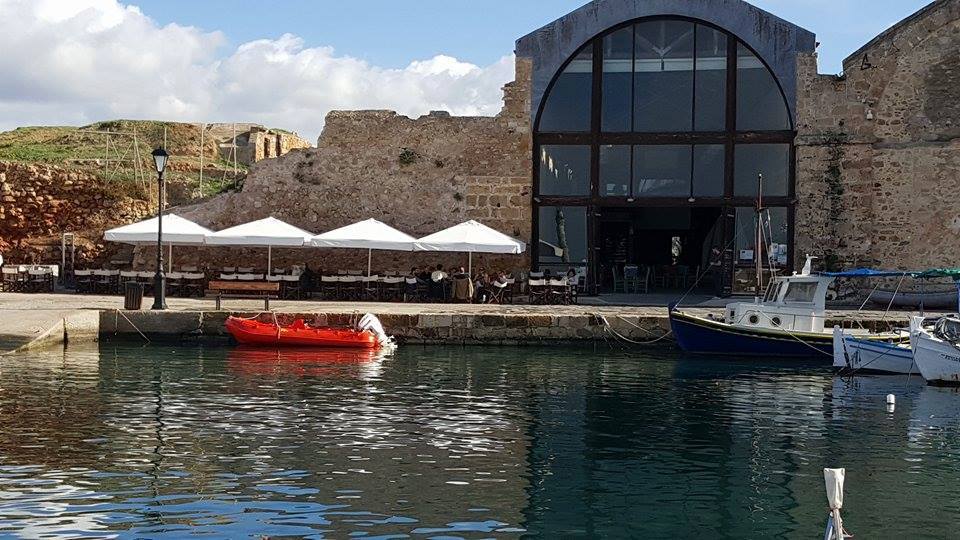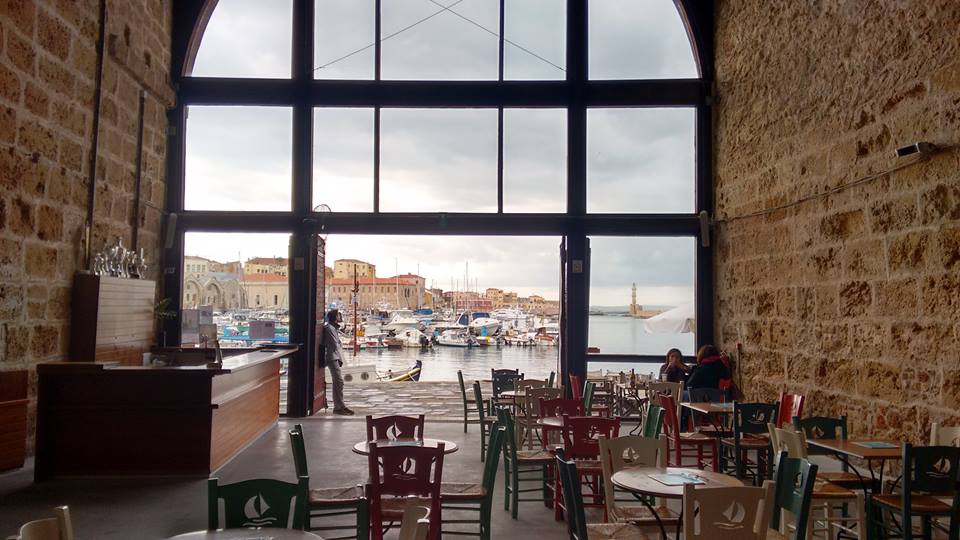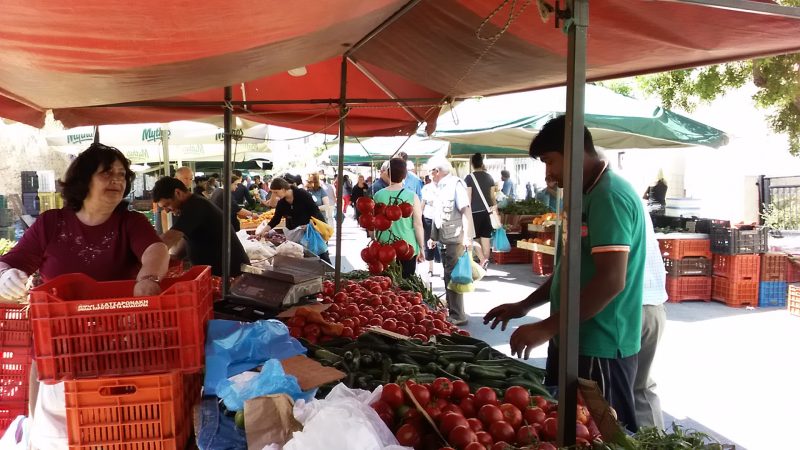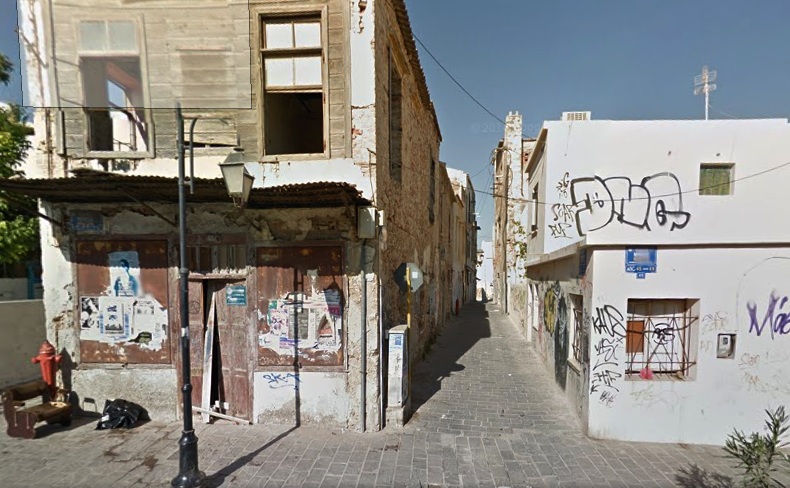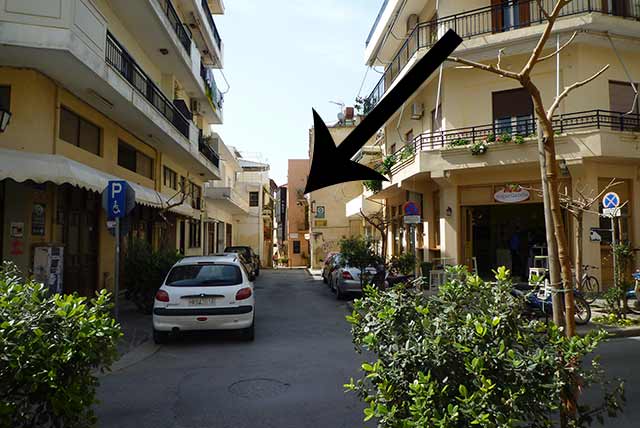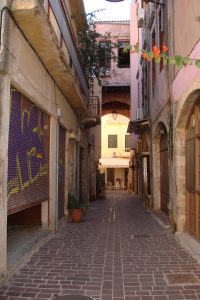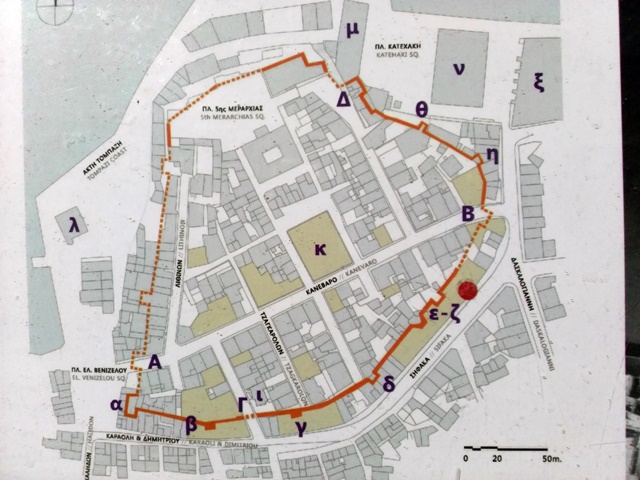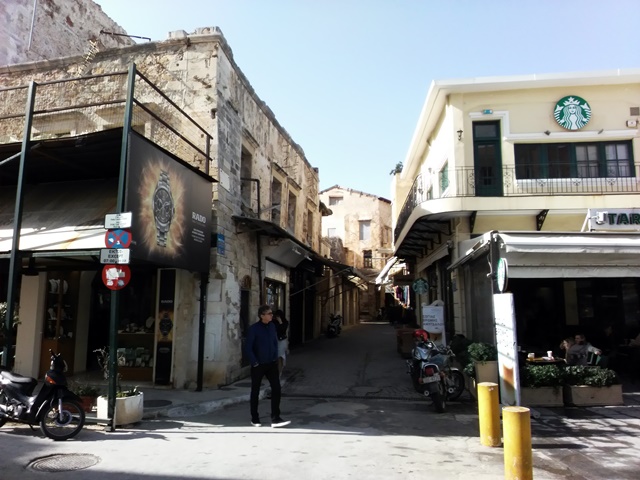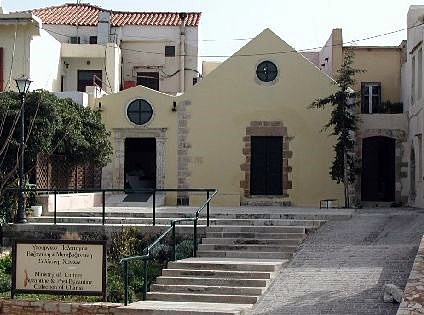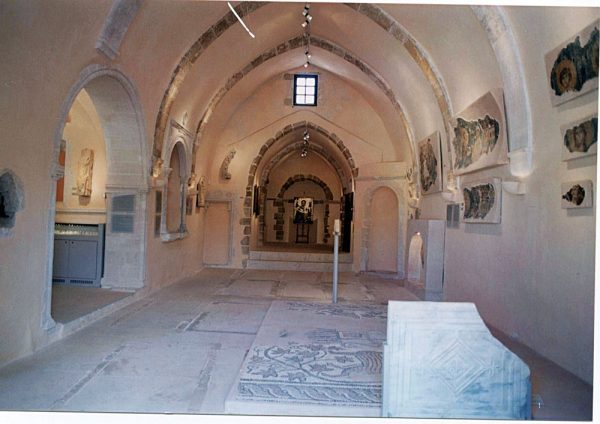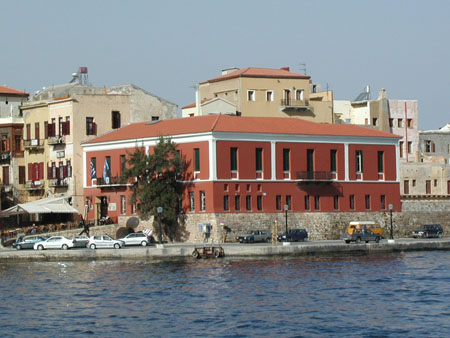self guided tour in Chania old town – Chania info
Self guide to walk tour in Chania old town
* See also our guides:
self driving tours around Chania
Chania- Places to avoid – Overcrowded
1.st tour of self guide, center of old town & old Port
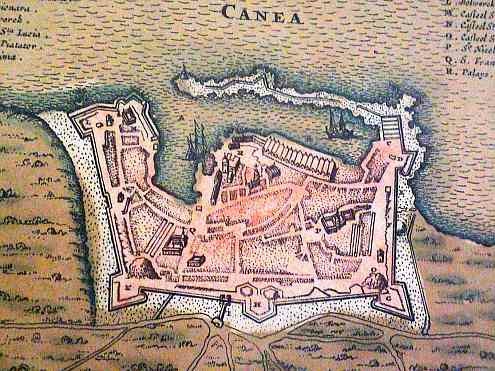 Chania had always a particular character among Mediterranean ports and cities.
Chania had always a particular character among Mediterranean ports and cities.
Consecutive invasions and occupations through centuries gave a multilingual, multiracial, and a multireligious character to the city.
Since Antiquity , Crete was a master piece for all powers: Roman empire, Arab expansion, Byzantine empire, station for the Crusaders, Genovese and finally Venetian occupation, then Ottoman empire for 260 years, an interval of 10 years with Egyptian rule, and finally at early 20th century to return to its Ethnic origin of Greece.
Kastelli, is the hill that overlooks the port, and from the Minoan period up to the early years of Venetian rule, surrounded by the remains of the Byzantine city walls and was always an administrative center.
On the West side of old town lies the Topanas district, which was the Christian quarter during the Ottoman period. Its name comes from the Venetian ammunition warehouse (Turkish tophane), which was located there.
Jewish quarter (Evraiki or Ovraiki) was located at the north-west of the Old Town, behind the harbour and within the borders of Topanas. Chania Synagogue is a museum but Jews of Chania ( established since their expulsion from Spain at 1600), “dissapeared” during 2nd World War during German occupation of Crete.
On the East side of the Old city , was the Muslim quarter.( Cretans of Muslim religion were obliged to move to Turkey after governments agreement at 1925 – suite to the Greek-Tukish war of 1922).
1st Walk in the old town of Chania
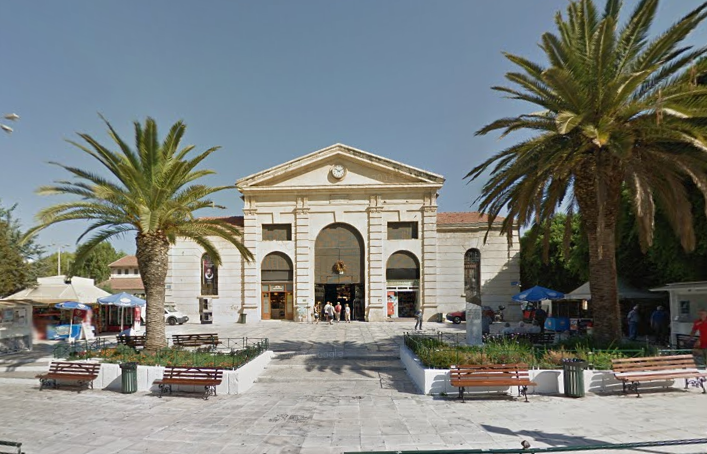 Start from Main Market building , land mark of the city and make a pass inside across to the street on opposite side. Main market of Chania is a great building in shape of a cross and each section is dedicated for particular products .One for fish, the other meat , in the entrance for bread and dairies.
Start from Main Market building , land mark of the city and make a pass inside across to the street on opposite side. Main market of Chania is a great building in shape of a cross and each section is dedicated for particular products .One for fish, the other meat , in the entrance for bread and dairies.
Unfortunately, the location selected to build at 1913 was on a section of Venitian walls of the city so restauration of this part will be impossible in the future.
Once cross inside the Market you exit to North side and down the stairs , at Tsouderon street. Go left towards West and after few meters you are in a narrow picturesque street called Leather street with shops on both sides, mostly filled mostly with leather articles.
This street ends at the main street CHALIDON leading on your right to the OLD HARBOUR square.
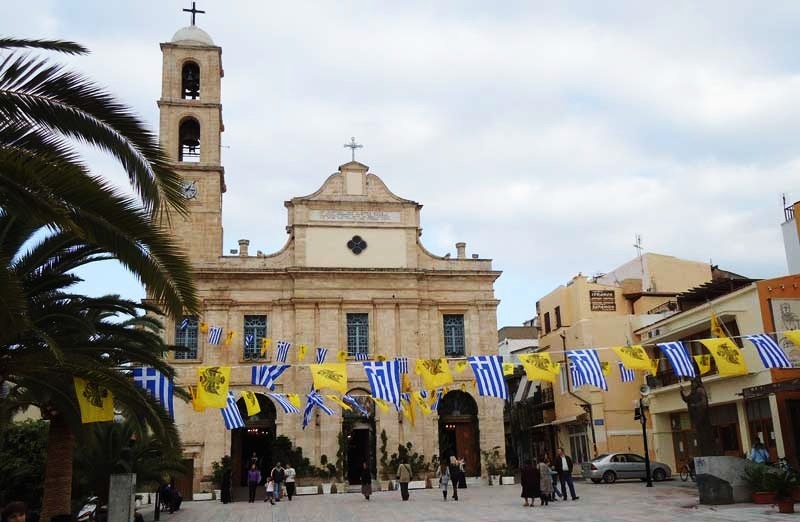 Walking towards the sea front, you pass first by the ORTHODOX cathedral church of the city dedicated to St. Virgin Mary.
Walking towards the sea front, you pass first by the ORTHODOX cathedral church of the city dedicated to St. Virgin Mary.
Just across, there also the entrance of the CATHOLIC church of the city.
Few meters further down towards the port, and you have on your left a great building :
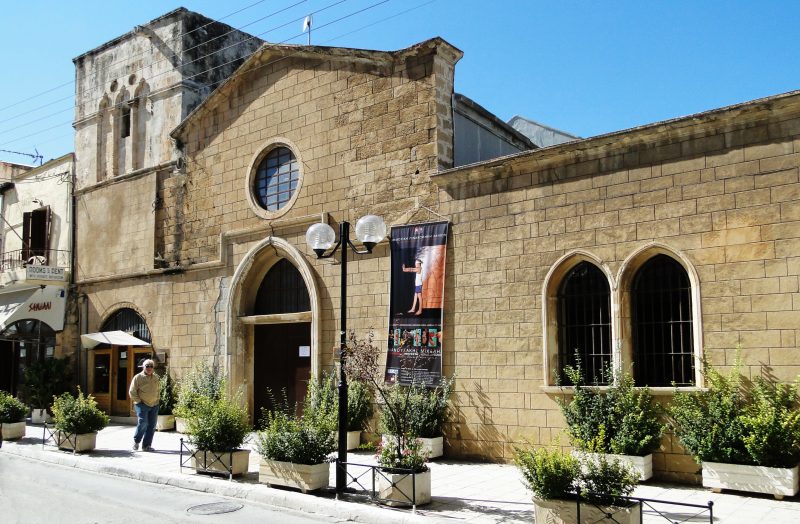
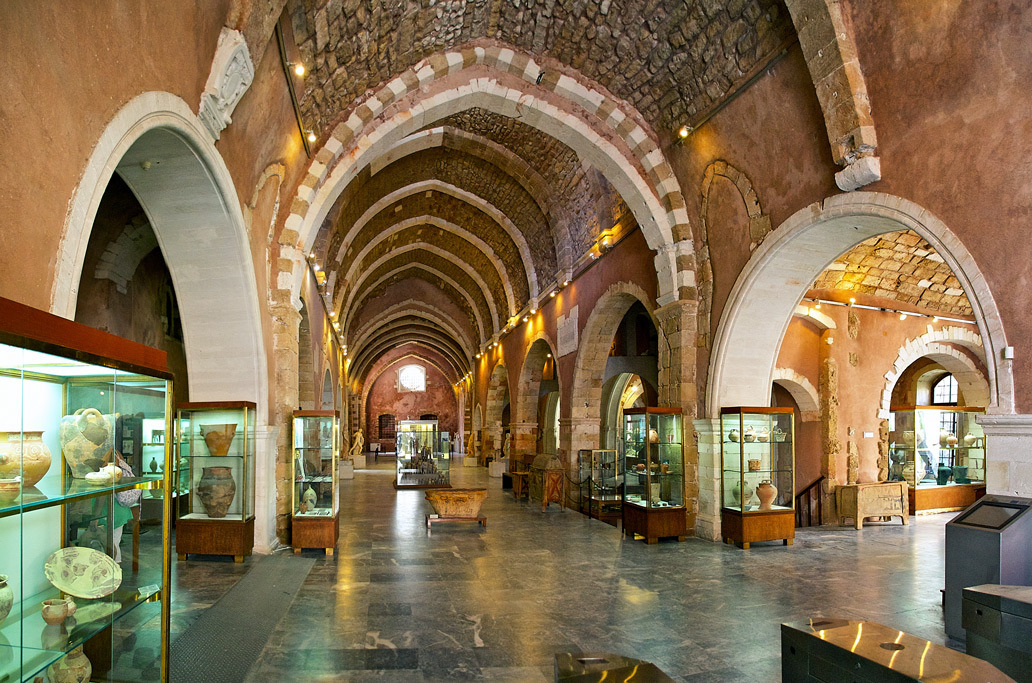
The building from 1600 PC, Venetian period the Franciscan Monastery and main Church, to be transformed later in into a mosque, the “Giousouf Pasha Tzamisi”. Then, a minaret and an octagonal fountain were added in the beautiful courtyard on the side. After the island independance , was transformed again into the 1st cinema in the city , and finally into archaeological museum .Further down , you reach square Venizelou , with a marble fountain , and finally you arrive at the sea front .
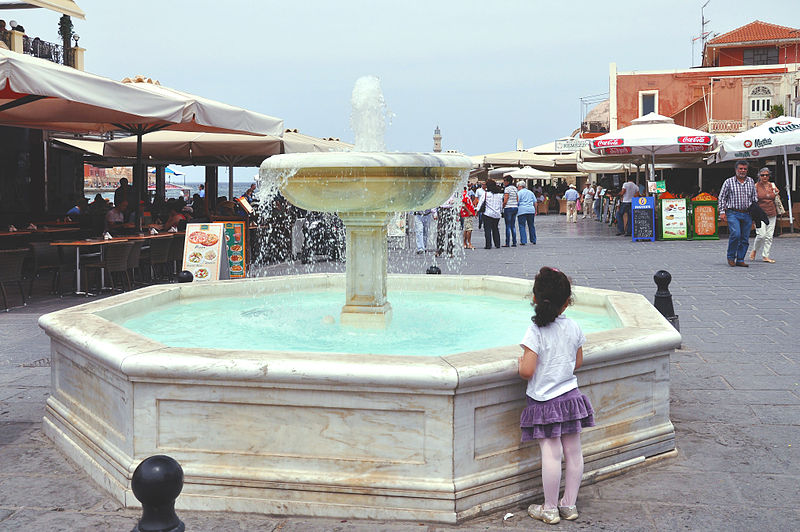
The Mosque of Hassan Pasha, (the first Ottoman governor), was constructed by the Ottoman Turks after they occupied Chania in the 1645. The mosque is a landmark of the city for its bulbous dome.
In the past, the yard was full of palm trees and graves of pashas, and also had a small minaret, which was demolished in 1923.
The 21 m . Egyptian Lighthouse, which stands proud of the Old Port of Chania, is one of the oldest in the world, its history is lost in the mists of time. though … Egyptian in the name, it is actually a creation of the Venetians. With time it suffered major damage and had to spend more than 200 years, until the decade 1830-40, to be reconstructed by the Egyptians during their short occupation of the island. Became one of the most distinctive architectural style because the base has an octagonal shape, the middle section has 16 corners, while the top is circular and It resembles a minaret!
Turn towards the interior port , the first imposing building is the Venetian Grand Arsenal.
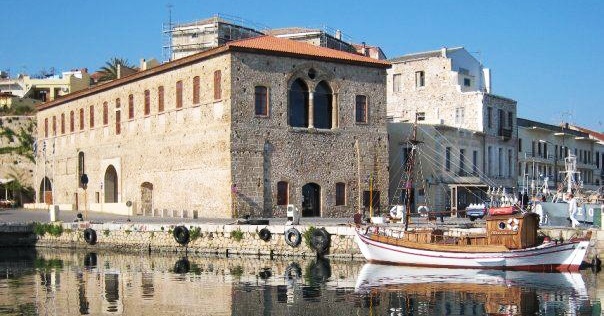 The building was originally the end unit of the terrace of 17 vaulted buildings to host all ships (including their masts and sails) for repairs and renovations after so long trips.It was built last, with thicker walls. During Turkish occupation the vault was replaced with a second floor. Later it became a Christian school, then a hospital. It also served as Chania city hall until 1941 when it was partly destroyed by German air force bombardment.
The building was originally the end unit of the terrace of 17 vaulted buildings to host all ships (including their masts and sails) for repairs and renovations after so long trips.It was built last, with thicker walls. During Turkish occupation the vault was replaced with a second floor. Later it became a Christian school, then a hospital. It also served as Chania city hall until 1941 when it was partly destroyed by German air force bombardment.
Behind the Grand Arsenal, is the hill of Kasteli (castle) and this has been inhabited since Neolithic times. It was always an ideal place for a settlement due to its secure position and so has been surrounded by fortifications.
To go up to the castle :
On the right side of Arsenal just by the side street behind, the path goes upwards to reach the castle above . Take these 47 steps and you find your self in the center of the dominant hill on the city.Once up , first turn right and at the end of street , pass the semi closed gate and you are in the most exiting spot in the old city. .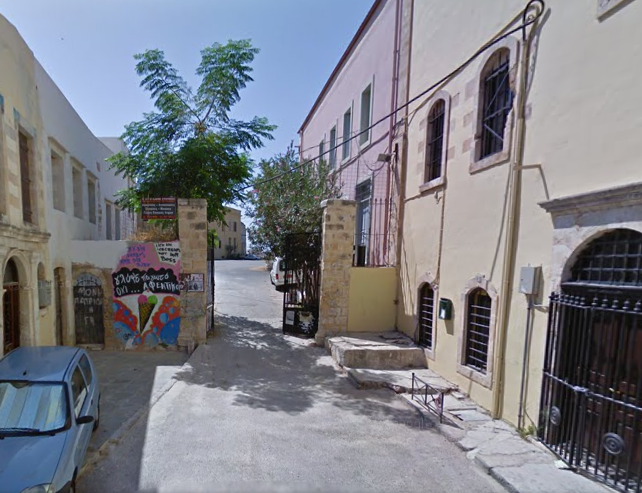
From there you have an incredible view all over the old city – the entire port underneath and the extended view to North and West.
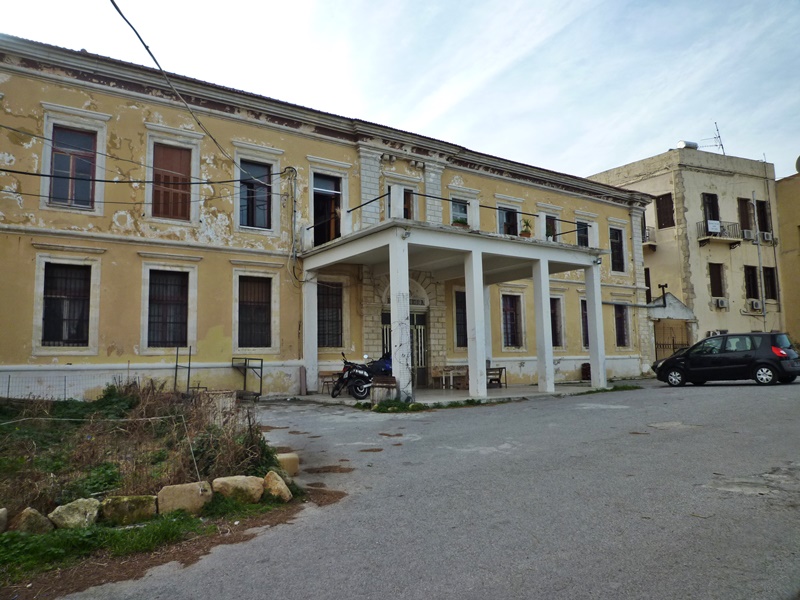 The main building below was the Headquarters of Ottoman pashas of Crete ( Cretans called it serai or konaki)
The main building below was the Headquarters of Ottoman pashas of Crete ( Cretans called it serai or konaki)
Here Is the the most beautiful natural terrace overlooking the harbor.
Returning on the street leading to the heart of the ancient city (st Markos street) towards the mountains . There was also the majestic Cathedral of the Venetians, dedicated to the Virgin Mary, .and few meters further down are the ruins of the monastery of the Dominican monks “Santa Maria dei miracoli” which was destroyed during German bombing of 1941.
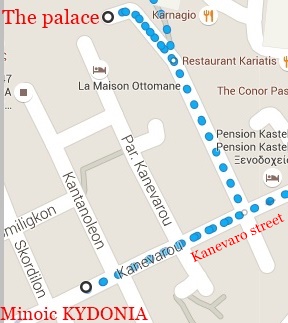 We continue further down we reach street KANEVARO ( Italian admiral during mediation of the “great powers) in the Cretan Revolution of 1897.This street was the most important in Byzantine and Venetian times . The ruins left from the 2nd world war bombing, allowed excavations which revealed part the city KYDONIA Proto-Minoan settlement.
We continue further down we reach street KANEVARO ( Italian admiral during mediation of the “great powers) in the Cretan Revolution of 1897.This street was the most important in Byzantine and Venetian times . The ruins left from the 2nd world war bombing, allowed excavations which revealed part the city KYDONIA Proto-Minoan settlement.
Kydonia was one of the three cities founded by King Minos in Crete. Large habitations with well-built rooms, elegant floors with circular cavities- fireplaces, coated walls with deep red mortar, door frames and ceramics of excellent quality are some of the findings that indicate the existence of a significant proto-Minoan centre. The extended excavations in the archaeological site of Kasteli, which constitutes one of the most important monuments of the prehistoric period of Crete.
We continue on KANEVARO street on the opposite direction descending the hill to East, then walk once more to the port and Venetian Arsenals ( Neoria of Chania).
During the Venetian occupation (1204 – 1669), the need for the closer presence of Venetians in Crete made them construct a large number of “Neoria” (arsenal) in Chania, where the ships would be repaired during the winter. In 1593, sixteen “Neoria” had already been constructed.In 1599, the south “Neoria” complex was completed with the construction of the 17th “Neorio”.
Our walk ends at the very last Arsenal called after MORO (venetian governor ) for a coffee.
In 1607, during the expansion of the northeast rampart, begins the construction of 5 more “Neoria” at the heart of the port to the east. Two of them were completed, however, only the walls to the arch of the third one were constructed so was recently finished and a wood roof was added.The first on right, is part of Nautical museum of Chania and houses an experimental reconstruction of a Minoan trading boat.
In the middle , there is still working shipyard for fishermen boats.
The last on left actually serves as the best lounge cafe of the city and is the base of sailing club of Chania.
2nd tour of self guide in the old town of Chania
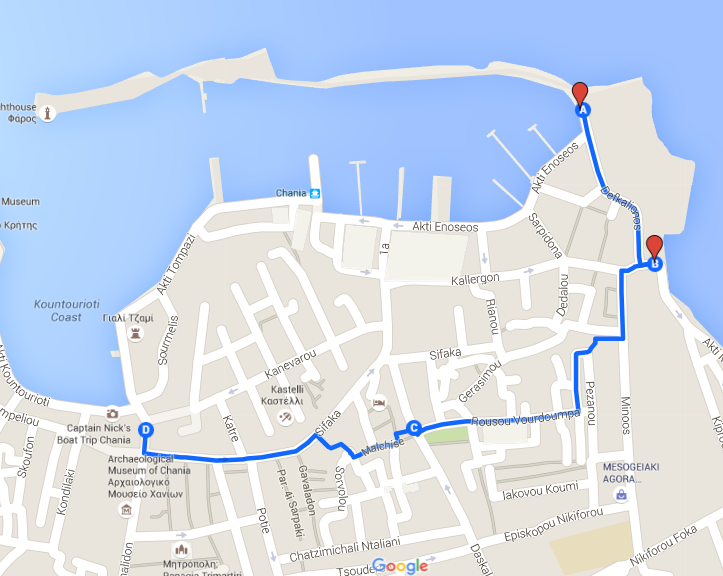
Leaving the Neorio (arsenal) MORO, pass behind street by the big parking place to exit in the KOUM KAPI gate between the old and new city . There is an opening on the Venetian fortification wall called Sabbionara fort.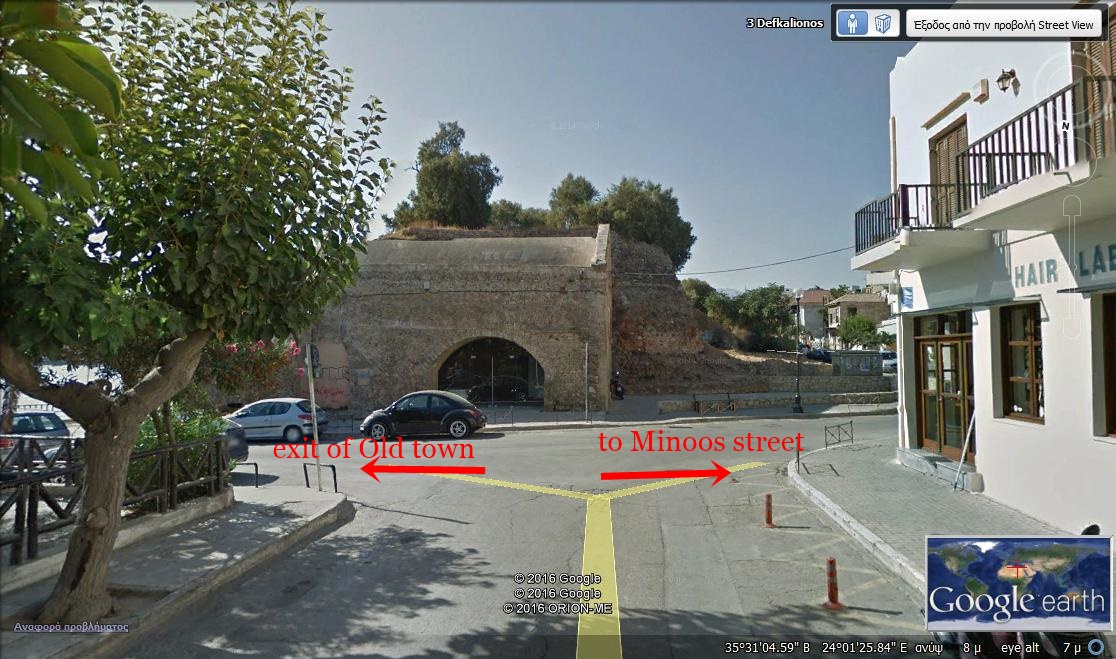
On left, you exit the Old city to modern one, called Koum kapi (The gate of the sand -in Turkish)
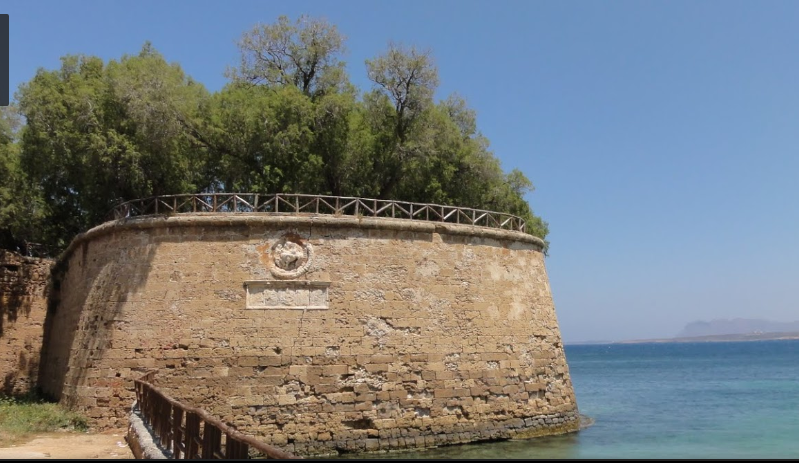 .
.
Here are the remains of Venetian land mark with the lion sculpted on the Wall.
And the outside part of Venetian wall where is hosted an open theater also.
Go back in the old town and turn left to MINOOS STREET.
Every SATURDAY , in this street take place a popular open market with vegetables , cheeses, honey and fruits directly from the producers arriving from near by villages.
From Minoos street , walk inside this narrow street. You pass through a small square and you continue by the side street of GERASSIMOU and go LEFT UP witch will lead you to SPLANTZIA square.
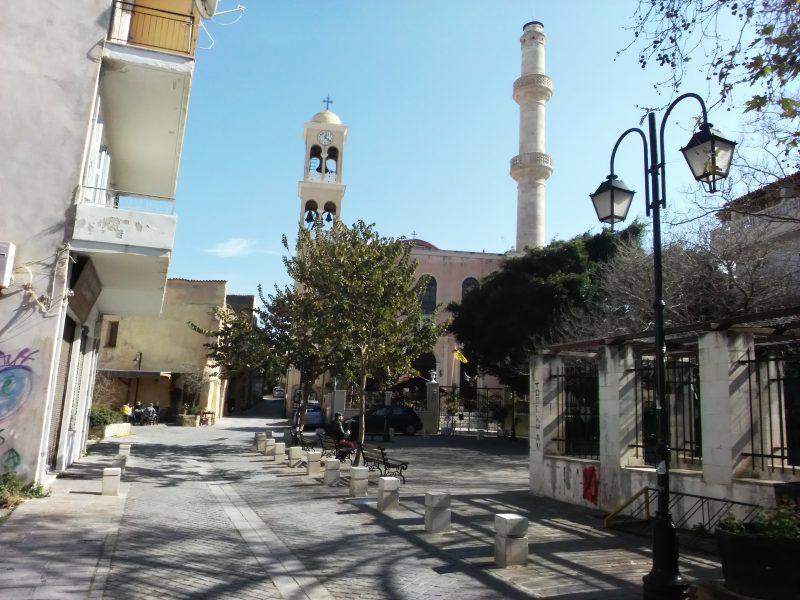 Here was the religious center during Turkish occupation.
Here was the religious center during Turkish occupation.
The church of Agios Nikolaos, located in Splantzia Square, was built before 1320, during the Venetian period, as a monastery of Dominican Order. After the dominance of Turks in Chania in 1645, the church was transformed into a mosque and was given the name Hiougkar Tzamisi (the Emperor’s mosque), in honour of sultan of the Ottoman Empire, Imbraim.
The sword of the Turk dervish, who was the first one that entered in the city, was considered to be blessed and wonder-working, and was reserved there. Its importance is highlighted by the existence of two- instead of one- balconies on the minaret on the southwest corner of the temple. The morphological elements of the minaret are of great interest, as they follow the Venetian tradition.In the same square, beneath the giant plane tree there is a commemoration stone because here was a place where Christian were hanged during the Turkish occupation.There is also behind an enclosed place and down several stairs a subterranean aqueduct bringing water from water sources of a village 5 kms away from the city, so τhe population had always fresh water.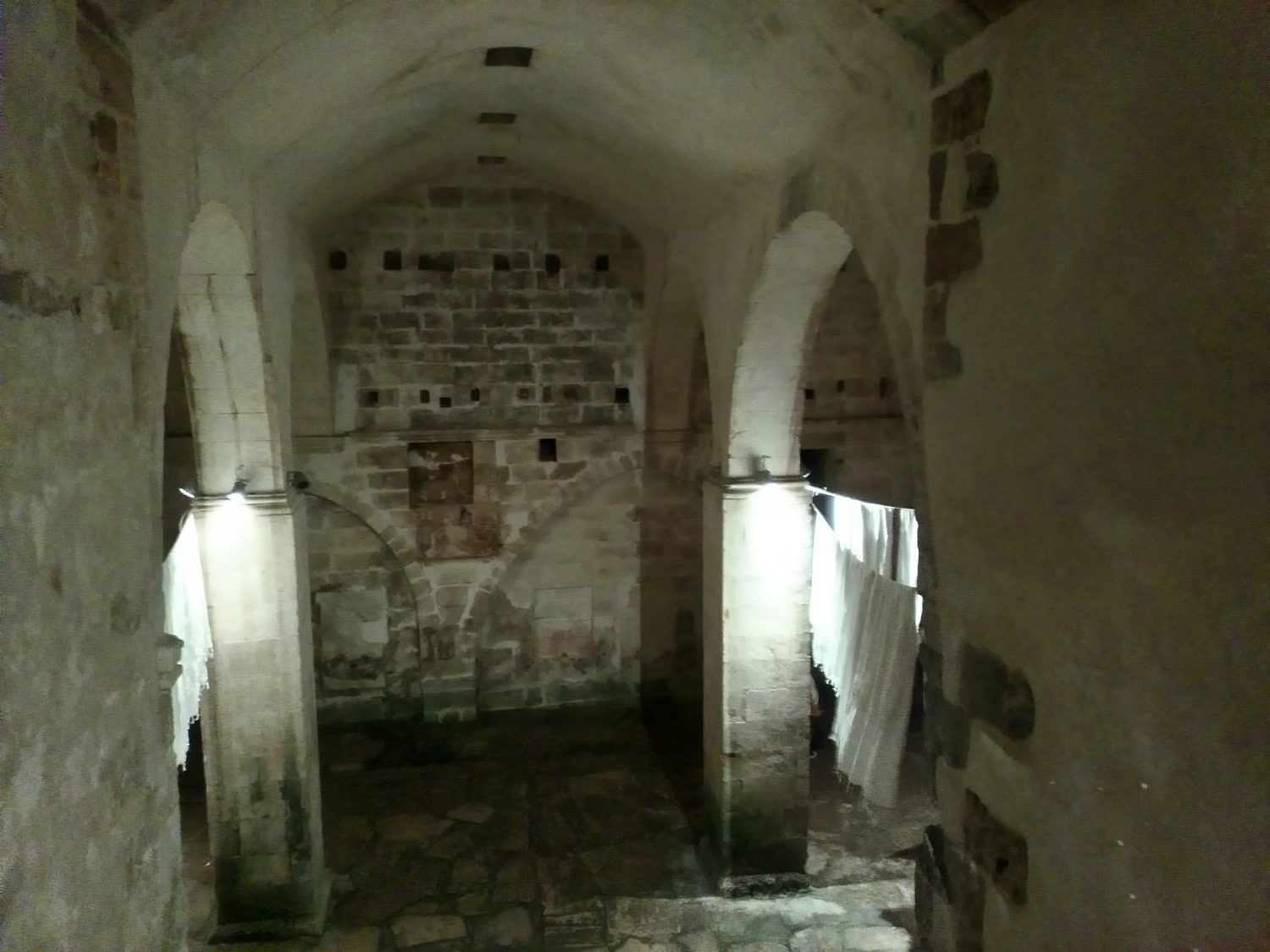
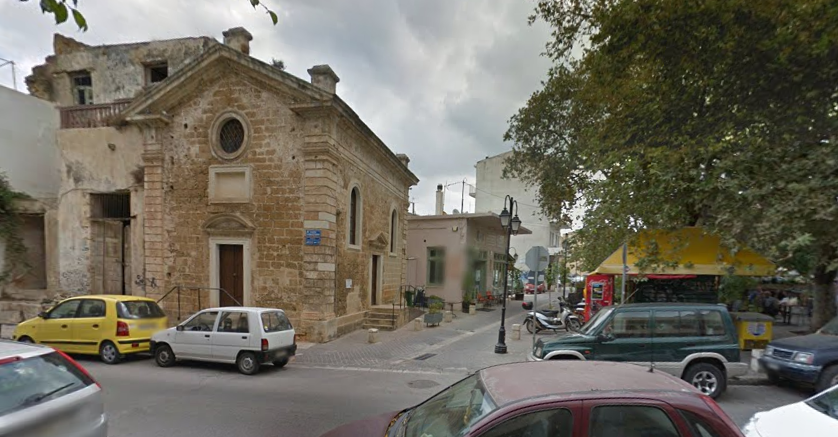 On the side of the square is the church of St. Rocco.IIn 1630, probably after the outbreak of the plague, while Saint Rokkos was the protector of Chania from this contagious disease. During the Ottoman rule used as a military guardhouse, while during the Cretan State and until 1925 as a police station.
On the side of the square is the church of St. Rocco.IIn 1630, probably after the outbreak of the plague, while Saint Rokkos was the protector of Chania from this contagious disease. During the Ottoman rule used as a military guardhouse, while during the Cretan State and until 1925 as a police station.
Continue on the main street towards upper town, on your right towards South (the mountains). On the first right corner go inside the small street witch leads to a small square .
from there you pass under the arch with a house on top,
pass under and go right, to the end of this street. Then turn right again .
At the end , you face the Byzantine fortifications of Chania castle.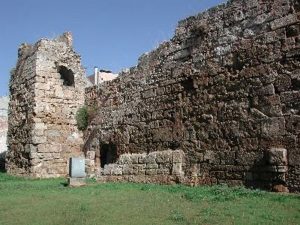
The wall who surrounded the hill of Kasteli, where was the first inhabiting of the city. It was built in 12th century and its outline is irregular with longitudinal axle from the East to the West, where its two central gates were located.
The Wall consists of rectilinear parts, interrupted polygonal towers, and is founded over the ruins of an older fortification of the Hellenistic period
Walking by the Wall to LEFT direction , you reach again the main square of the harbour at your right.
You continue on the same narrow street named ZAMPELIOU, into the heart of Topchanas and Hebrew past neighborhoods.
These are two of the most historic in the northwestern part of the old town of Chania. After the Ottoman conquest it was pole of installation of Christians and Jews (expelled from Spain 1490 by Ferdinand and Isabella and invited in by the Sultan Vayagit to establish in Istanbul,, Thessaloniki, and Chania.
Today the picturesque streets, the Venetian mansions as Renieri, Delfino etc ,and the monuments give the feeling of a living monument and a magnet for the tourists.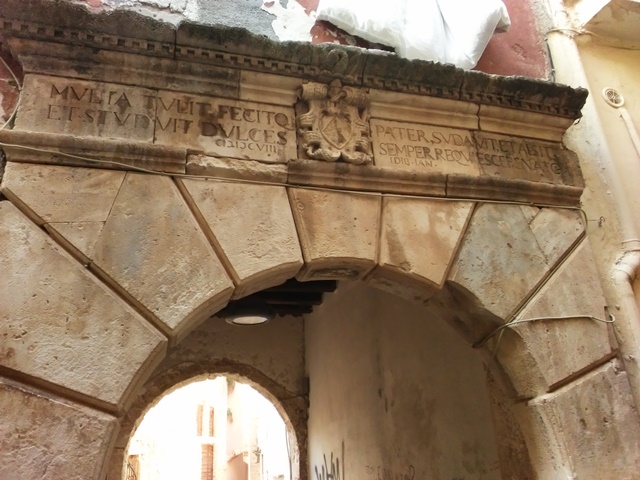
Proceed along this street Zambeliou. You can then turn left for a while to Kondylaki street.Follow the signs and turn right at a small street that leads to the Etz Hayyim Synagogue; built in the 17th century (on site of still earlier synagogues) destroyed in World War II, and restored recently.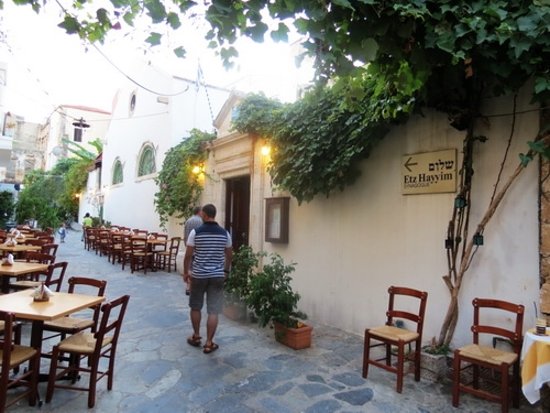
Check www.etz-hayyim-hania.org to learn about the history and activities of the synagogue. Go back to Zambeliou, you’ll ascend a bit until you come to Theotokopoulou (honor to Cretan origin’s painter El Greco” on your right.
turn right here and take in the architecture and shops of this Venetian-style street, which also has been the center of Greek community during Ottoman period, as you make your way down to the sea.
At the end of the street, on the right, the recently restored Church of San Salvatore was converted into a little museum of Byzantine and post-Byzantine art. There was the homonymous monastery of Franciscans . During the Ottoman rule the monastery was converted into a mosque in the place Aga Khan.
After the Byzantine museum, you’ll be just outside the harbor; turn right and pass below the walls of the Firkas, the name given to the fort that was a focal point in Crete’s struggle for independence at the turn of the 20th century. You reach the main port where at your right the red building is “The Naval Museum” where are some interesting displays and artifacts.

